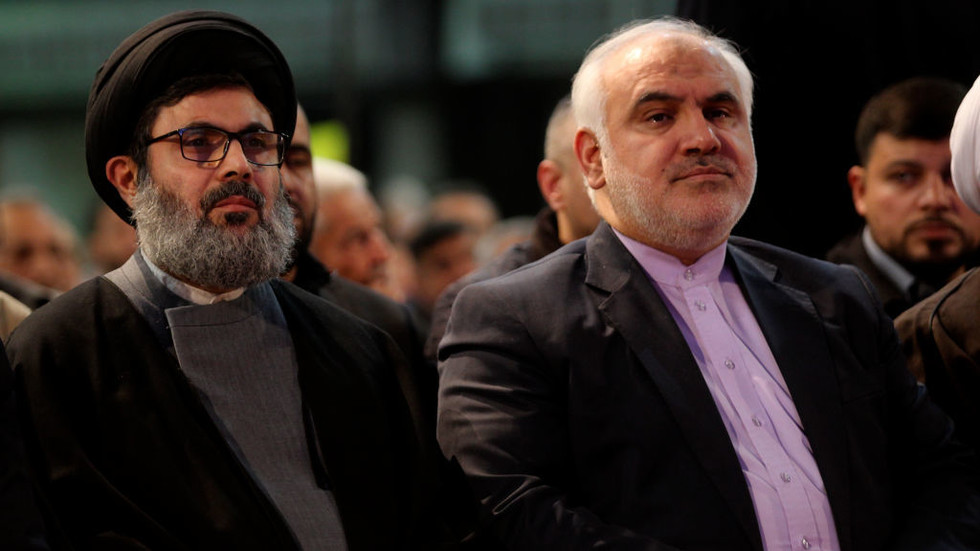Hashem Safieddine, the alleged successor to Hezbollah’s late leader Hassan Nasrallah, was killed in an Israeli airstrike in Beirut on October 4, according to the Israel Defense Forces (IDF). The airstrike targeted Hezbollah’s underground intelligence headquarters in Dahieh, a predominantly Shia neighborhood considered a Hezbollah stronghold. The IDF’s statement confirmed that alongside Safieddine, Ali Hussein Hazima, the head of Hezbollah’s Intelligence Directorate, and several other commanders were also killed in the attack, which reportedly resulted in a high death toll among Hezbollah operatives present at the time. The strike’s timing and location underscored the intensity of the ongoing conflict, with Israeli jets employing missiles to target a facility described as critical to Hezbollah’s operations. Lebanese officials indicated that survival chances in the blast zone were minimal, reinforcing the ferocity of the assault.
Before his death, Safieddine, a 60-year-old cleric and cousin of Nasrallah, was frequently regarded as Hezbollah’s second-in-command and was rumored to be poised for leadership if Nasrallah were to be killed. Despite these speculations, Hezbollah sought to diminish such narratives, asserting that media reports about organizational changes following Nasrallah’s potential “martyrdom” lacked credibility. This denial possibly aimed to maintain solidarity within the group as they faced unprecedented challenges due to intensified Israeli airstrikes and their losses in leadership. The IDF’s targeting of key figures illustrates its broader strategy to dismantle Hezbollah’s operational capacity, particularly in light of perceived threats from the militant organization.
In the aftermath of the airstrike, tensions escalated significantly between Hezbollah and Israel. The militant group proclaimed the start of a “new and escalatory phase” in its confrontations with Israeli forces, marked by increased rocket attacks on northern Israel. Notably, Hezbollah claimed responsibility for a drone attack aimed at Israeli Prime Minister Benjamin Netanyahu’s residence, highlighting a shift towards more aggressive tactics. This evolution in hostilities follows a period of heightened Israeli operations in Lebanon, precipitated by episodes of sabotage against Hezbollah’s operations and an increasing number of border skirmishes. The ramifications of these confrontations have led to a substantial escalation in violence and radical changes in military engagement between the two parties.
Israel’s strategy appears to involve both aerial bombardments and ground engagements against Hezbollah, as well as the destruction of strategic communication networks previously relied upon by the group. Following the IDF’s successful operations, reports suggest that the death toll in Lebanon has significantly increased, with figures indicating over 2,400 fatalities to date due to the conflict. This mounting casualty count reflects the severe toll on the Lebanese population, amidst accusations of disproportionate Israeli attacks that have been condemned globally. The ongoing violence and instability in the region raise significant humanitarian concerns, compounded by the already precarious political situation in Lebanon and the high density of civilian populations in areas where Hezbollah operates.
While the IDF claims to have neutralized over 1,500 Hezbollah operatives since the escalation of hostilities last year, the efficacy and implications of these claims are hotly contested. Hezbollah disputes these figures, asserting that their actual losses are closer to 500, which poses challenges to the IDF’s narrative of success against the militant group. Moreover, the disparity in casualty figures raises questions about the broader strategic impact of the ongoing conflict and its potential to evolve into more extensive warfare. The conflict also underscores the complexities involved in measuring military success, particularly in a context marked by informal engagements and asymmetric warfare tactics employed by both sides.
As Israel continues to engage Hezbollah, the political dynamics in Lebanon remain fragile. The deaths of prominent figures like Safieddine and Nasrallah, along with the ensuing conflict, could lead to shifts in allegiance or a reconfiguration of power within Hezbollah and its relationship with the Lebanese state. Consequently, the possibility of increased internal strife and the challenges of governance in a war-torn Lebanon loom large as international observers monitor the situation. The implications of this conflict extend beyond immediate military objectives, highlighting the intertwined fates of regional security, internal Lebanese politics, and humanitarian crises, amidst a backdrop of broader geopolitical tensions in the Middle East.

